Flush & Recessed Baseboards -The Minimalist Molding You Need For Your Modern Home
My blog contains affiliate links- which means that if you click on a link and end up purchasing something, I’ll earn a small commission. You’ll never pay a penny more, and I can continue creating free content like this, so it’s a win-win!
share /
Images via John Maniscalco Architecture & In Trim Mouldings
It’s all about those subtle details when it comes to a minimal and modern home, and one of my favorites is the millwork and molding. Instead of installing traditional baseboards in a contemporary home, there’s a modern alternative that’s making waves in the design industry, and I think you’re going to love it.
It’s referred to as flush or recessed baseboards, but it’s also known as many other names in the construction world, like shadow bead or reveal bead.
What are flush & recessed baseboards?
It’s the look of the drywall and molding sitting flush and separated by a perfect, linear gap.
I’ve seen this type of molding in high-end commercial buildings, but it’s slowing creeping into residential design, too. This barely-there molding is the perfect complement to a simple color palette and contemporary furniture.
It’s modern, sleek, and minimal…what’s not to love?
Images via Unknown & B.E. Architecture
How do you create flush and recessed baseboards?
This look is achieved by placing a metal spacer (called a reglet) between the drywall and trim, which creates the sleek divide.
Once the reglet is secured to both the drywall and molding, it gets plastered and painted over to create a seamless look, just like typical drywall.
Can you DIY Flush Baseboards?
If you’ve done any drywall work of your own, you probably know the process is messy AF to say the least…not to mention it takes a certain level of skill and patience.
From our own experience drywalling, I’d say that DIY’ing this would probably be something to try after you’ve had a little practice with drywall. Simply because you can’t just cover up the drywall with molding and call it a day. Flush molding will take a little more patience and skill.
If you’re thinking of hiring out for this look, keep in mind that it might cost more than your typical baseboards because it involves a few more steps and more precision. Ultimately that means more $$$.
Images via Archello & Studio TM
I love how sleek and modern this flush molding looks, and if I’m being honest, I’m a little bummed we didn’t incorporate this look in our own home!
But as I like to say, “I’ll save it for the next house.” haha!
What do you think about this modern take on molding and baseboards? Have you seen it before or do you have this type of molding in your home? I’d love to know in the comments!
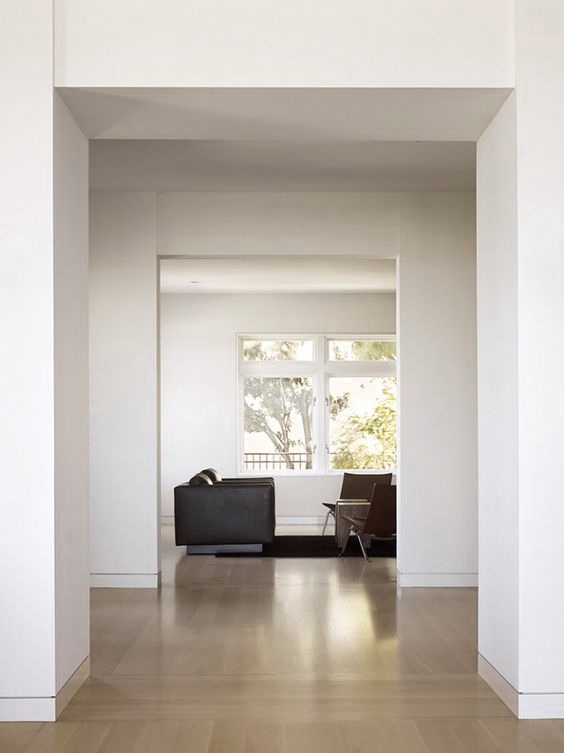
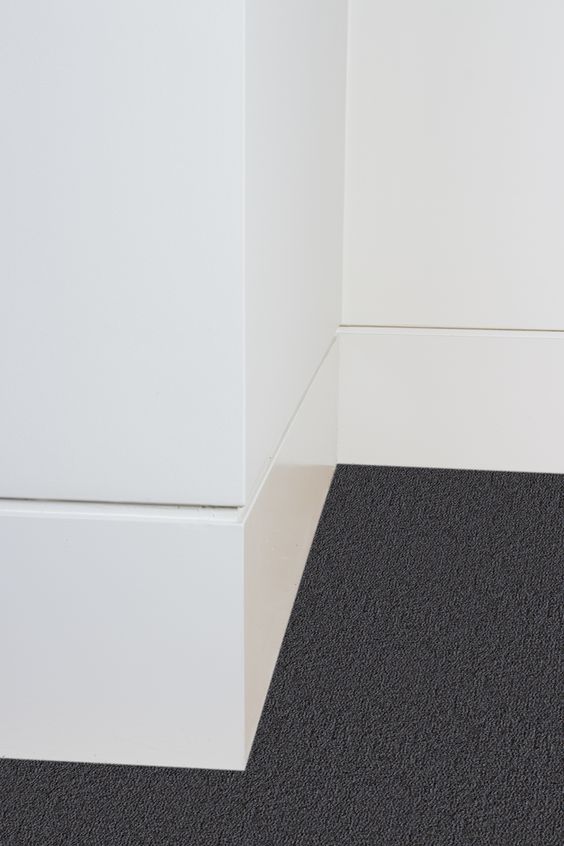
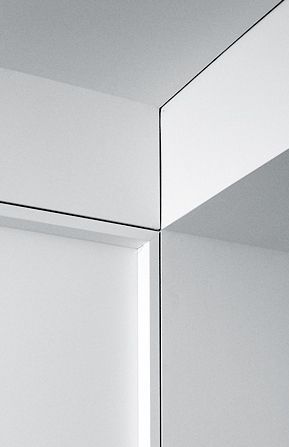
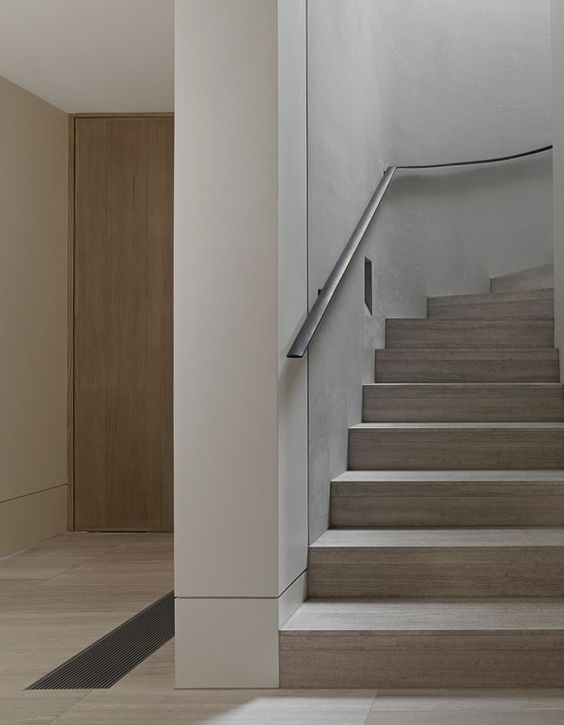
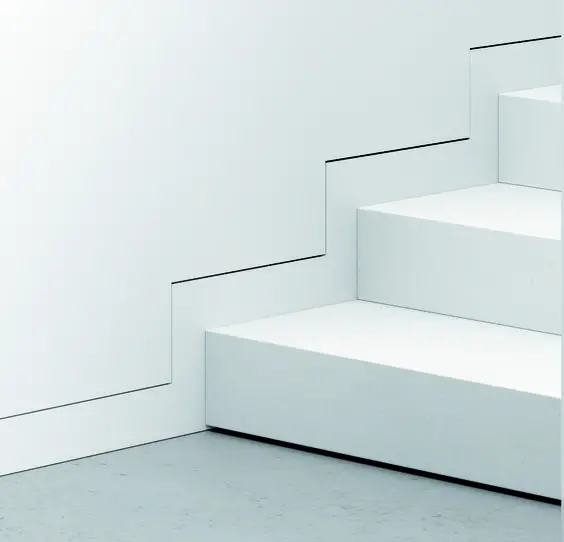
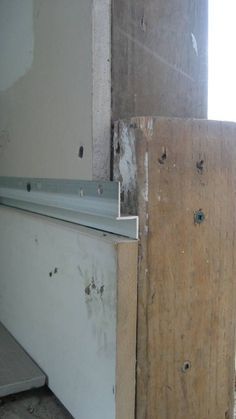
Great share, thanks for this! Can be a great guideline for those doing the same work. In drywall installations, a building material that can help along with that are drywall access doors. It provides safe and convenient access to wall locations, and made specifically for drywalls. Great content.
Mariella
Access Doors and Panels
https://www.accessdoorsandpanels.com
Can this be done retrofitting without totally replacing the sheetrock? For instance, cutting the sheetrock and installing the reglet and baseboard?
Great question! Sheetrock is typically glued down and secured with screws. I think it would depend on if you could get the reglet under the sheetrock and secure it without damaging it.
It’s probably one of those things that once it was all said and done, it would have been easier to install new drywall.
Im building a house and have been looking into this – Its actually not that much of a cost increase if you use their "flush reveal base" (e.g. DRMBFLR5025400) because with that reglet its also the baseboard. So you save money on the baseboard material and the labor to nail/mask/paint it. BUT, and its a big but – with a flush/recessed/trimless baseboard, that means you HAVE TO have flush or trimless doors and windows, which really complicates things. For doors you’d have to expose the jamb which means you need custom doors with fancy hardwood jambs. That’s the real expense. Windows, you can cheat with drywall returns as the jambs/header. You can’t use drywall as door jambs!
I simply want to mention I am very new to blogging and site-building and really liked this web blog. Very likely I’m likely to bookmark your blog . You actually come with good writings. Appreciate it for sharing with us your blog site.
[…] have been actually been more expensive depending on the tiles we chose. We are doing these cool recessed baseboard and frameless interior doors all over the house for a minimalist vibe and thought about going back […]
It can definitely be more expensive. There’s less room for error with the recessed baseboard – go figure, right?! It’s going to look awesome, though!! Btw, the house plans look absolutely beautiful! 🙂
Does the tile go down before the flush baseboards?
If the tile can be done before the drywall, that would be ideal!
Hello, All.
I wonder if someone can post a pic of this style of baseboard that shows more visual information than that present in the current pics which lead the thread.
I am in an old place with baseboard fin/rod heating in the bathrooms, and the entire fin/rod area is recessed, with an ugly, imposing painted metal cover which sloppily leans to cover the recess.
I am wondering, since most of the structural work of creating the recess is done, if this approach might work- both refacing the area and reclaiming some precious visual real estate in the small bathroom.
Is it possible to install a marble recessed baseboard? What is the best baseboard we need to buy in order to create the modern and polished look and most important the best material to be used. Thank you!
Yes, marble baseboards are gorgeous! You’ve great taste! It just takes a little more work than basic baseboards – you’ll want to make sure you can get the marble cut to the thickness of your walls. As for normal baseboards, MDF is preferred. I hope that helps!
@ana – Yes, it is possible. In general, for a marble recessed baseboard you’ll follow the same process as you would for a standard painted MDF recessed baseboard.
First, you’ll need to terminate the drywall at the desired elevation, i.e. 3″ — you would use spacer blocks to create a baseline for your drywall, hang drywall, attach a regret such as a Z shadow bead (PVC) to terminate the drywall cleanly, and then mud to the edge. Next, you would install your flooring tiles, and as a last step you would glue the actual baseboard into the cavity.
Another option is to use an L-shaped aluminum baseboard profile. You will find several options, i.e. Dorsis Linus flush baseboard, which will set the baseline for your drywall and create a consistent recessed cavity for the baseboard insert. In this case the baseboard bracket would go in first followed by drywall, floor, and eventually the marble baseboard insert.
great answer! Thank you!